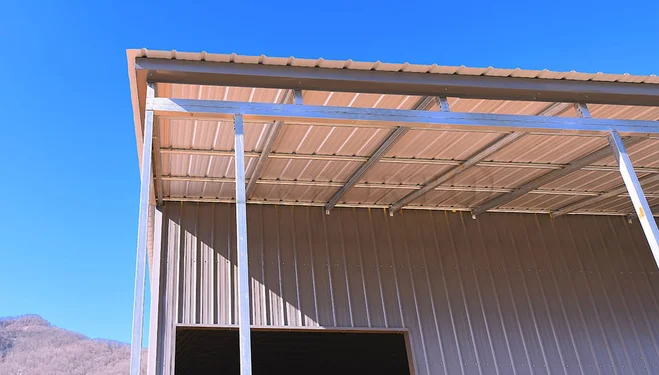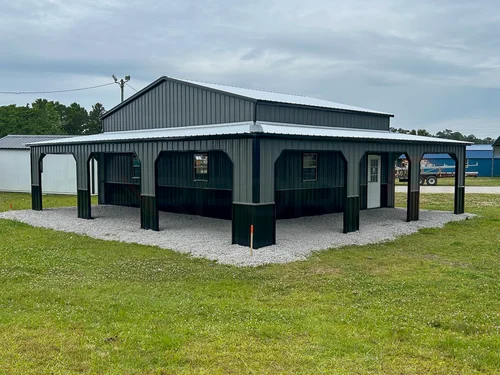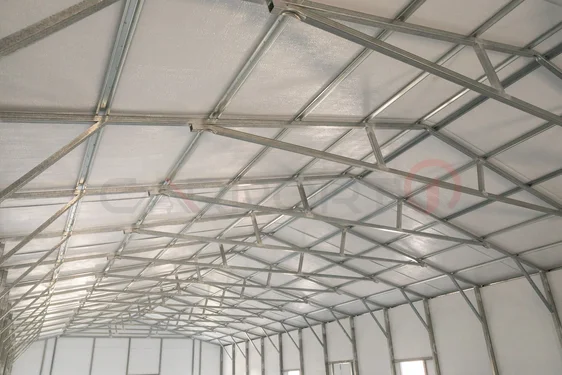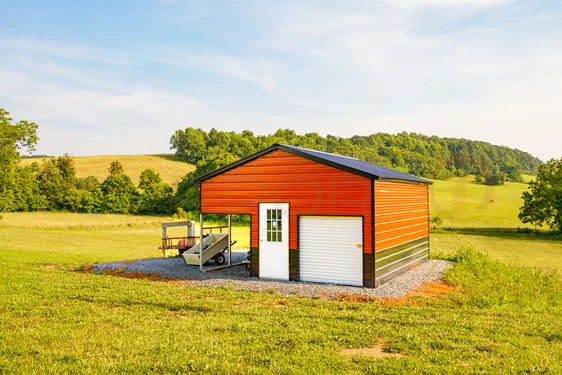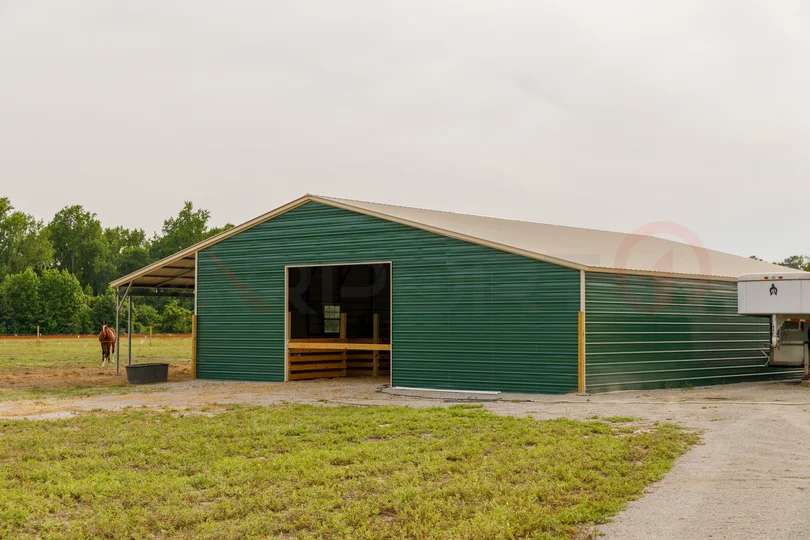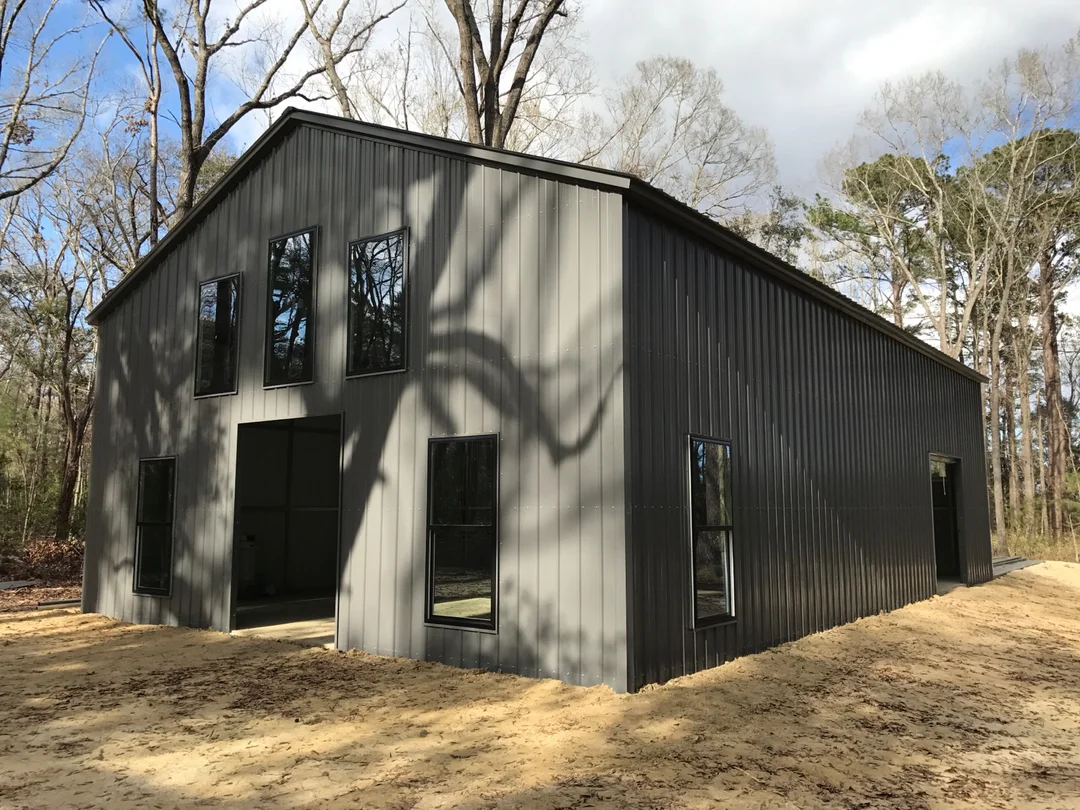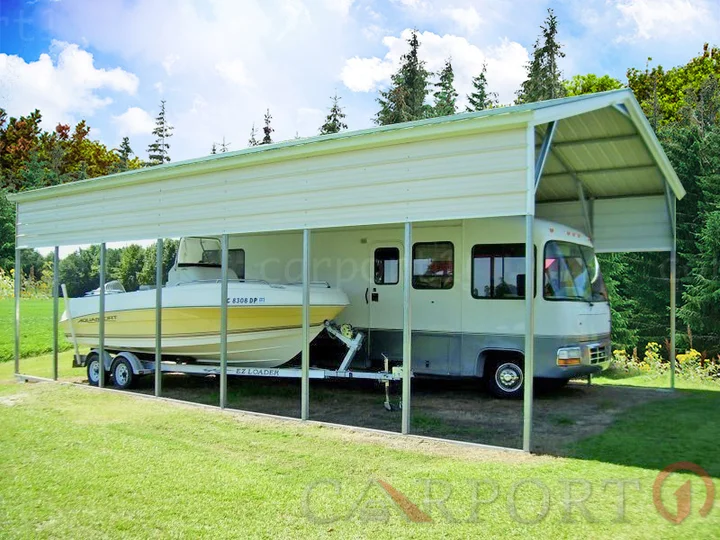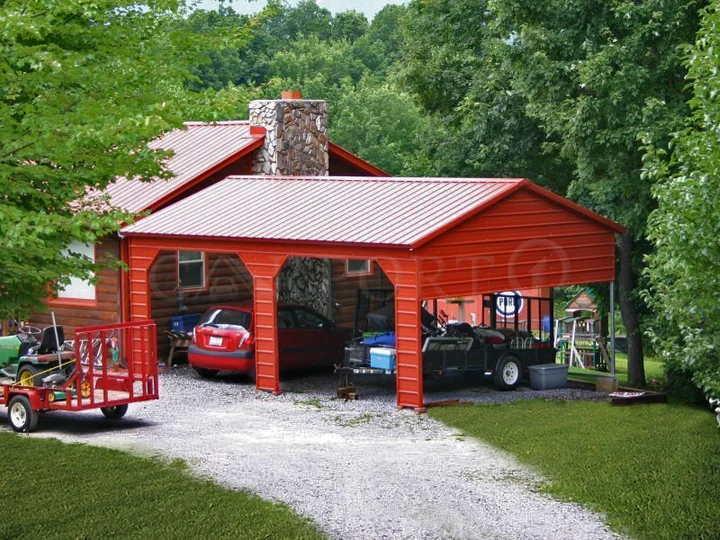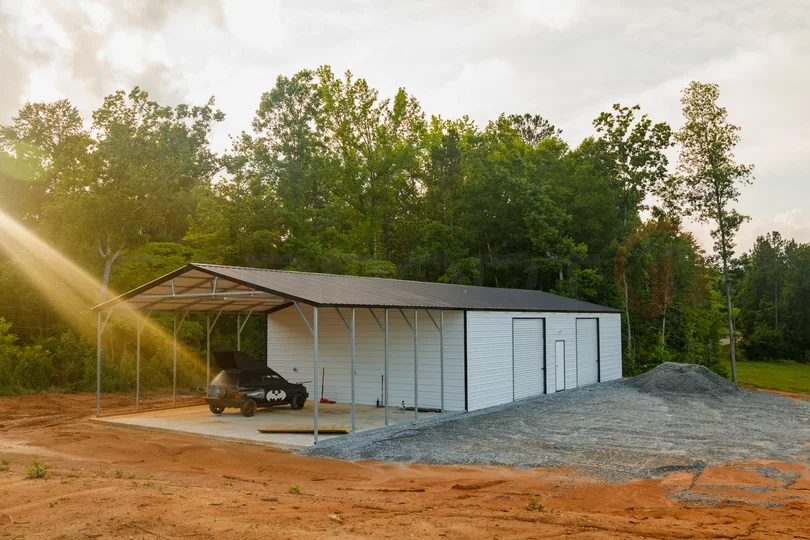The strength of any metal building or structure is determined by the steel framework it has used. The wider and heavier the structure, the more support it will need to sustain its own weight and to protect the property inside the structure from the weather or external force.
Truss is basically a metal body or metal frame added to support the weight and structure of the roof of any metal building. It acts as the structural support that fits inside the roof of a carport, barn, garage or workshop to provide added support, tension, and stability.
The structure of a roof truss can be made of metal or other materials. It includes one or multiple triangular units consisting of straight slender members with their ends connected via nodes.
A roof truss is made up of a couple of different elements. The exterior frame members are called chords and the interior triangle structures are webs. These two elements can be manufactured in different shapes and sizes depending on the requirements of the job.
Does truss differs from one roof style to another?
Yes, but before looking into how a truss design differs from one roof style to another, let’s see the different types of trusses available for different roof styles.
Types of Roof Trusses
There are numerous truss styles that are available in the market that are used in metal building construction. Below are some of the more popular styles of metal building roof truss.
Pratt Truss
It is the most common and economical truss type where the members (metal frames) placed vertically. These vertical members are designed for the compression and diagonally placed members are designed for the tension.
Warren Truss
In Warren truss, the diagonally placed members are designed to create a shape of ‘W.’ The advantage of using the ‘W’ shape is that they possess equal strength in compression and tension. Hence, a Warren roof may require less number of members compared to a Pratt truss.
Fink Truss
Fink truss is known for short sized members and chords. The arrangement for compression and tension depends on the construction they will be used for. They work well for smaller roof designs.
King Post Truss
A King post truss has two-angle support members and is used for a short span of around 8m (26ft). King Post Truss works well for metal buildings with smaller roofs.
Queen Post Truss
Queen Post Trusses are similar to the King Post Trusses. They are used for a short span of around 10m (33ft). The outer supports are angled towards the center of the structure. However, the major difference in this design is the horizontal extension lying at the center which relies on beam action to provide mechanical stability.
Howe Truss
How Trusses are known for the versatility they offer. They have a wide span which can cover around up to 30m (99/100ft). Therefore, they are mostly used for building bridges.
North-Light Truss
North-Light Truss is one of the oldest remaining design. They offer durability and versatility through proper ventilation and wider span ranging up to 100ft.
How Metal trusses differ from one roof style to another?
Trusses are generally used for larger buildings that need to have greater widths. They offer better structural integrity and strength compared to the simple bows. But, they do come at an additional cost. Understanding when your metal building requires trussed roof is very important to ensure the resistance of the building against various forces.
The metal trusses do differ from one roof style to another. Every roof style has some specific requirements to fulfill which can only be attained by designing a specific size with certain metal gauge, panels, and bows and trusses.
Roof Styling
The use of metal trusses differs from one roof style to another.
Vertical Roof Style –Vertical roof style is an A-frame style that has a two-way sloping roof with vertical roof panels. Vertical roofed metal buildings can span large widths, more so than the other roof styles. Additionally, these roofs have extra structural elements, like the hat channels, ridge caps, etc. which increase their overall weight. For these very reasons, metal buildings, especially larger ones, with vertical roofs utilize trusses in most cases. They are designed with multiple trusses, bows, and purlins placed under the roof to withstand heavy snowfall or heavy rain. Both dead load and live load are considered while designing the roof. Hence, more trusses are placed to support the load in the areas with harsher climate.
BOXED EAVE ROOF STYLE –Boxed Eave style is also an A-frame style designed with roof panels running horizontally to the side of the structure or building. The roof tends to be heavier than regular roofed structures. These structures do not span as great widths as the vertical roofs. Still, for better structural stability, people choose to add trusses to the roofs of their boxed eave metal buildings. More trusses are used for dead loads along with live loads to withstand heavy wind.
REGULAR ROOF STYLE –Regular roof style is the most common choice of roof styling for any metal structure. This can withstand any plain weather conditions. Unlike vertical or boxed eave they may use a lesser number or less complicated trusses to support the roof. This is mainly because, structurally, regular roofs are lighter than either the vertical or boxed eave roofs. Plus, they are not really used for buildings that have very large widths. However, a metal building owner can choose to add extra trusses for additional support.
Metal Building’s Width
Trusses along with bows are added to provide supplementary assistance and stability to any roof structure. The numbers of Trusses and bows depend on the roof style, total width and holding capacity.
Metal buildings with roof width sizes of over 24ft include trusses. The smaller metal building may or may not require trusses, depending on the local climate and weather conditions. We do offer the choice of adding trusses to your metal buildings when the structure has widths less than 24ft.
Dead Load vs. Live Load for Metal Roofs
Dead load
Dead loads are basically the own weight of the materials used while building the roof structure. These forces act vertically and can affect the overall structure’s weight. To evenly distribute the dead load to the entire metal building, trusses are placed strategically throughout under the roof.
Live Load
Live loads or Structural loads are forces, deformations, or accelerations applied to a structure or its components.
Wind can create a suction force which applies extra weight to the roof. The pressure of the wind load depends on the roof shape, wind direction, and location of the building. For additional support, extra trusses are added. Snow load can also heavily affect the roof. The force applied to the structure from heavy snowfall can lead to extra weight and deformation. Hence, trusses are placed strategically to support the life load of the roof.

